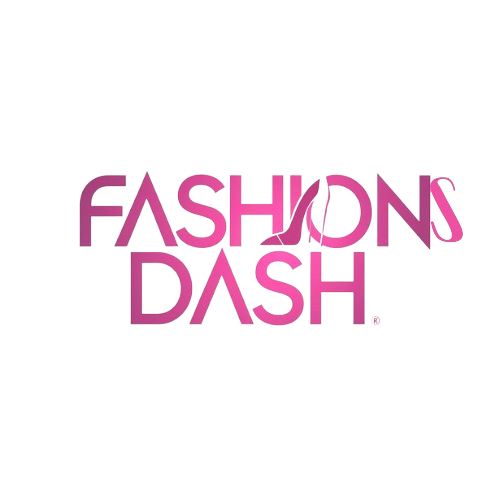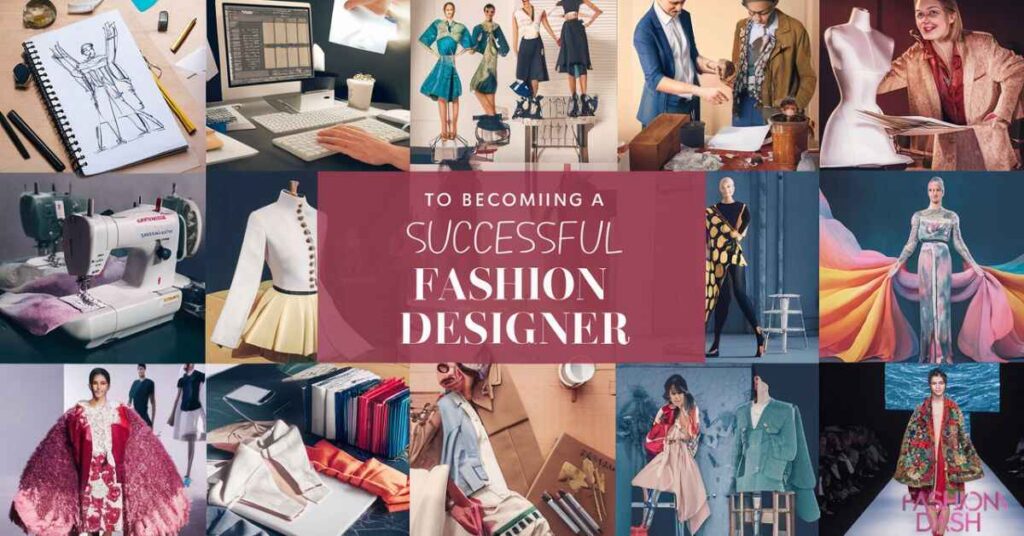In the glamorous world of fashion, designers are the creative force behind the clothes we wear. From haute couture gowns to trendy streetwear, their artistic vision shapes the styles that adorn fashion runways and city streets alike.
If you have a passion for design and an eye for what’s fashionable, a career as a fashion designer could be your dream path.
This comprehensive guide will walk you through the key steps to turn your creativity into a rewarding profession.
What does a fashion designer do?
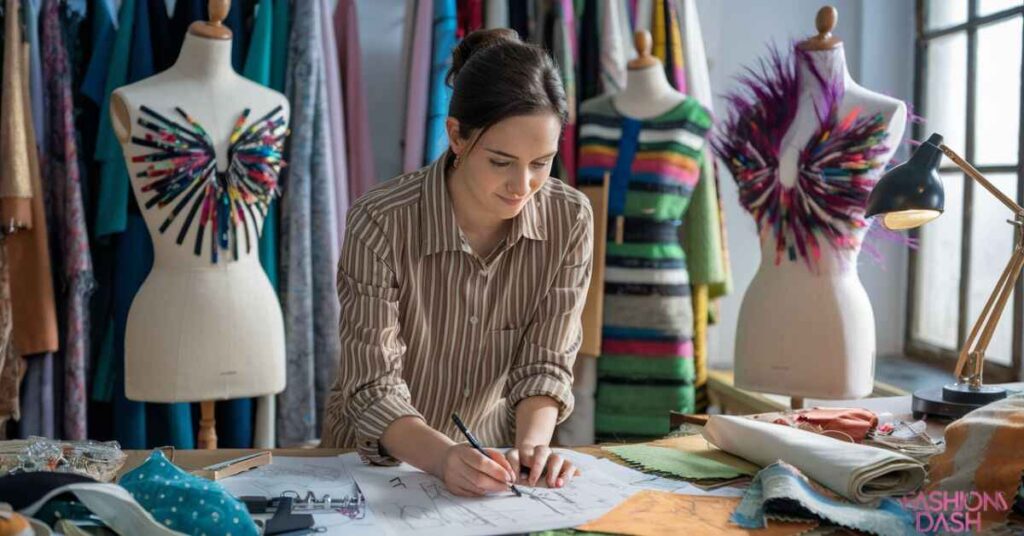
Fashion designers are the masterminds behind clothing collections and apparel lines. Their responsibilities span the entire creative process, from the initial design concept to the final production. Here’s a closer look at the typical duties of a fashion designer.
Read This Blog: HOW TO STYLE A WRAP DRESS
- Develop designs: Using both traditional sketching and computer-aided design (CAD) software, fashion designers create preliminary illustrations and renderings of their apparel concepts. These initial designs serve as the blueprint for the final product.
- Select materials: After finalizing a design, fashion designers carefully choose the fabrics, trims, and other materials that will bring their vision to life. Factors like color, texture, durability, and current fashion trends influence these material selections.
- Produce prototypes: To evaluate the design in a tangible form, fashion designers construct sample prototypes or garment mockups. This step often involves fitting the prototype on live models to assess the fit, drape, and movement of the design.
- Choose collection themes: Rather than creating standalone pieces, most fashion designers conceptualize and develop entire collections centered around a unifying theme or aesthetic. These themes might draw inspiration from a particular era, cultural influence, or seasonal trend.
- Market collections: After finalizing a collection, fashion designers must promote and sell their creations. This can involve marketing to retail buyers or developing direct-to-consumer sales channels, such as online stores or trunk shows.
- Oversee production: Once designs are finalized and orders are placed, fashion designers collaborate with manufacturers to ensure their collections are produced according to their specifications. This may involve visiting production facilities and approving final samples.
How to become a fashion designer
Breaking into the fashion industry as a designer requires a combination of formal education, hands-on experience, and a strong portfolio. Here are the seven essential steps to embark on a fashion designer career path.
1. Get a bachelor’s degree

Most fashion designer positions require at least a bachelor’s degree in a relevant field. Some recommended majors include:
- Fashion Design: This focused degree program equips students with the technical skills and industry knowledge specific to the fashion design process, including coursework in areas like patternmaking, draping, and computer-aided design.
- Fashion Merchandising: While not directly focused on design, a fashion merchandising degree provides valuable training in the business and marketing aspects of the fashion industry, which can be beneficial for designers looking to launch their own labels or collections.
- Visual Arts or Fine Arts: For those interested in a more general creative education, a visual or fine arts degree can cultivate essential skills like drawing, color theory, and artistic composition, which are fundamental to fashion design.
Notable fashion design programs can be found at schools like the Fashion Institute of Technology, Parsons School of Design, and the Rhode Island School of Design.
2. Develop a portfolio
As a fashion designer, your portfolio is your calling card – a curated showcase of your creativity and design aesthetic. Start building your portfolio as early as possible, even while still in school. Include your best sketches, illustrations, mood boards, and any completed garment samples or prototypes you’ve constructed.
A compelling portfolio can not only help you land internships and entry-level positions but also attract potential clients or investors if you plan to launch your own fashion line down the road.
3. Create a resume
In addition to your portfolio, you’ll need a well-crafted resume to apply for fashion designer jobs or internships. Your resume should highlight your relevant education, skills, and any previous experience in the fashion industry or adjacent creative fields.
Also Read This Blog: HOW LONG DOES COCAINE STAY IN YOUR HAIR?
When applying for specific positions, be sure to tailor your resume to match the job description, emphasizing the most relevant details and accomplishments.
4. Apply for an internship or entry-level role
Like many creative fields, getting your foot in the door of the fashion industry often starts with an internship. An internship provides invaluable hands-on experience, allowing you to observe the design process firsthand and learn from seasoned professionals.
Look for internship opportunities at fashion houses, design studios, or apparel brands that align with your specific interests or aesthetics. These experiences can help you develop essential skills, build your network, and potentially lead to full-time employment down the line.
If you’re unable to secure an internship initially, consider applying for entry-level positions like fashion assistant, design assistant, or pattern maker. These roles can provide a similar opportunity to gain practical experience and industry exposure.
5. Build a professional network
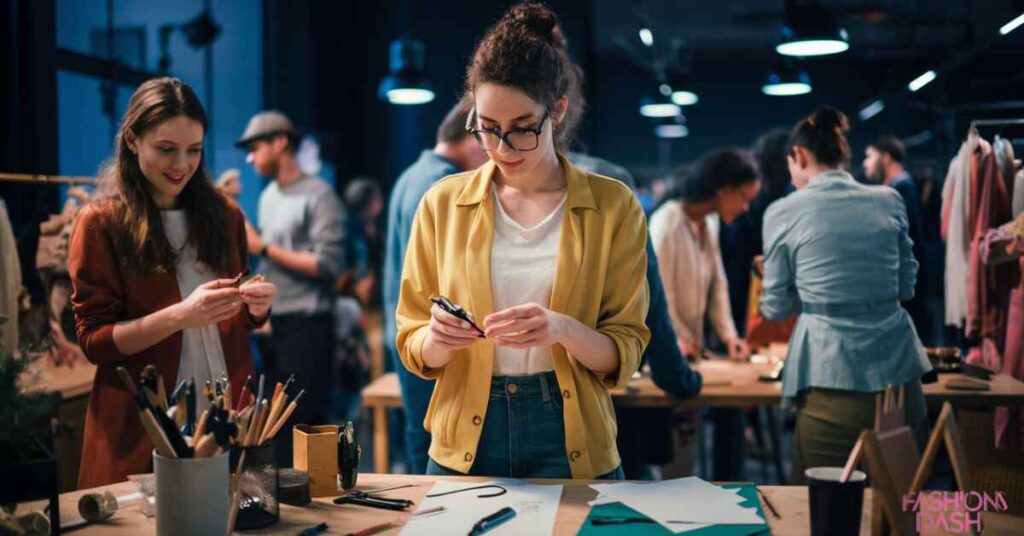
In the fashion world, connections are currency. Attend industry events, join professional organizations, and make an effort to network with other designers, buyers, and influencers whenever possible.
A strong professional network can open doors to new job opportunities, collaborations, and potential investors or clients for your future fashion ventures.
6. Cultivate important skills
Beyond formal education and training, successful fashion designers possess a diverse skill set that blends creativity with technical proficiency. As you gain experience, continuously develop and refine these essential skills.
Hard Skills:
- Proficiency in design software (Adobe Creative Suite, CAD, etc.)
- Sketching and illustration abilities
- Pattern-making and sewing skills
- Knowledge of fabrics, textiles, and materials
- Understanding of fashion history and trends
Soft Skills:
- Creativity and artistic vision
- Attention to detail
- Time management and ability to meet deadlines
- Communication and collaboration skills
- Adaptability and openness to feedback
Consider taking additional classes, workshops, or online courses to sharpen your hard skills and stay up-to-date with the latest design tools and techniques.
7. Choose a specialty
While some fashion designers create diverse collections spanning multiple categories, many find success by specializing in a particular niche or product line. Establishing a clear specialty can help you differentiate your brand, build a devoted following, and become an expert in your chosen field.
Potential specialties for fashion designers include:
- Women’s haute couture or ready-to-wear
- Men’s suiting or casualwear
- Children’s or maternity clothing
- Athletic or activewear
- Accessories (shoes, handbags, jewelry)
- Bridal or formalwear
- Costume design for theater or film
As you gain more experience, your personal aesthetic and passions may naturally guide you toward a particular specialty area.
Fashion designer skills
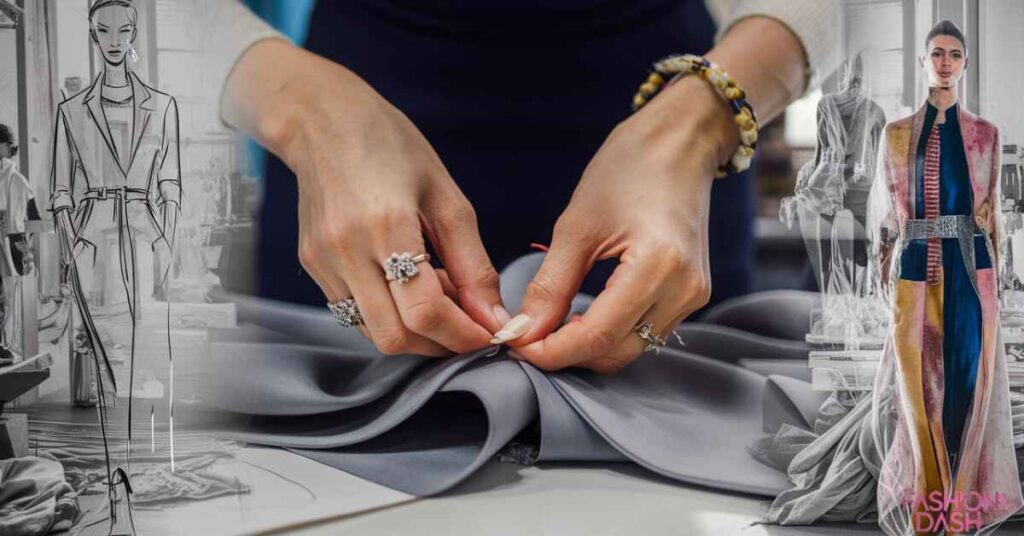
To thrive in the competitive fashion industry, designers must possess a unique blend of creative and technical abilities. Here are some of the key hard and soft skills that every successful fashion designer should cultivate.
Hard Skills:
- Drawing and Illustration: The ability to sketch designs, render detailed illustrations, and communicate visual concepts is fundamental for fashion designers.
- Computer-Aided Design (CAD): Proficiency in CAD software like Adobe Illustrator, Photoshop, and specialized fashion design programs is essential for creating digital renderings and technical specifications.
- Pattern-making and Sewing: Understanding the construction process, from pattern drafting to garment assembly, allows designers to bring their concepts to life as wearable prototypes.
- Textile Knowledge: An in-depth understanding of different fabrics, materials, and their properties is crucial for selecting the appropriate textiles for each design.
- Fashion History and Trends: Staying informed about historical fashion movements and current trends helps designers create relevant and innovative designs that resonate with their target market.
Soft Skills:
- Creativity and Innovation: The ability to continuously generate fresh, original ideas and push the boundaries of design is the driving force behind successful fashion collections.
- Attention to Detail: From precise measurements to intricate embellishments, fashion design requires a meticulous eye for even the smallest details.
- Time Management: With multiple projects and tight deadlines, effective time management and the
- Communication and Collaboration: Fashion designers must effectively communicate their vision to cross-functional teams, including patternmakers, seamstresses, and production staff, to ensure their designs are executed flawlessly.
- Adaptability: The fashion industry is constantly evolving, so designers must be open to feedback, willing to make adjustments, and able to adapt to changing trends and consumer preferences.
By continuously honing both their creative and practical skills, fashion designers can create innovative and impactful designs that capture the essence of style and self-expression.
How much do fashion designers earn?
The earning potential for fashion designers can vary significantly based on factors such as experience, location, and whether they work for an established brand or are self-employed. According to the Bureau of Labor Statistics, the median annual salary for fashion designers in the United States is $77,540.
However, entry-level fashion designers just starting can expect to earn closer to $38,000 per year, while experienced designers at the top of their field can command salaries well into the six figures, especially if working for a prestigious fashion house or launching their own successful clothing line.
In addition to their base salary, fashion designers may also receive additional compensation in the form of bonuses or a percentage of sales from their collections.
For those just starting, entry-level salaries may seem modest, but the potential for growth – both creatively and financially – is substantial for talented and driven fashion designers.
With a keen eye for style, unwavering determination, and a commitment to continual growth and skill development, you can turn your passion for fashion into a rewarding and lucrative career. By following these seven steps and immersing yourself in the world of design, you’ll be well on your way to seeing your creations grace the runways and retailers of the fashion world.
What’s the work environment like for fashion designers?
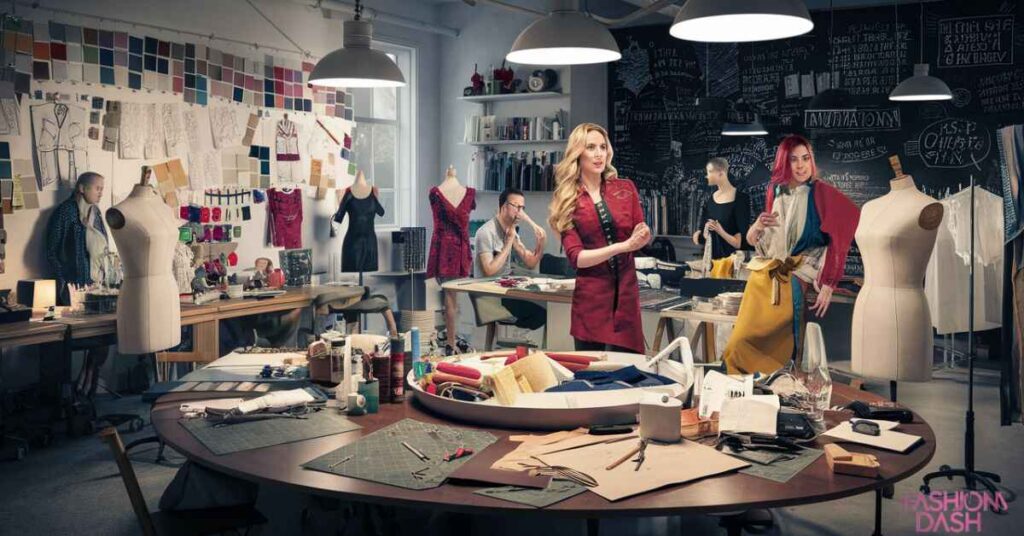
The work environment for fashion designers is often a creative studio or office setting, where they can have adequate space to sketch, drape fabric, and construct prototypes or samples. Designers may work independently at their desks using computer-aided design software, or collaborate in teams with other creative professionals like pattern makers and seamstresses.
Many fashion houses and design studios also have on-site sample rooms or small manufacturing facilities where designers can see their creations come to life and make necessary adjustments throughout the production process.
Designers should be prepared to work in a fast-paced, deadline-driven atmosphere, especially leading up to runway shows or product launches. The ability to thrive under pressure and maintain focus and creativity amid tight timelines is essential.
Can fashion designers be self-employed?
Yes, fashion designers can absolutely pursue self-employment or entrepreneurial paths within the industry. While many designers work for established fashion houses or apparel brands, others choose to launch their own independent clothing lines or work as freelance designers.
Self-employed fashion designers take on the challenge (and potential rewards) of being fully responsible for every aspect of their business, from the creative design process to marketing, sales, and production logistics. This path requires a great deal of self-motivation, business acumen, and the ability to secure your own clients or investors.
Some designers start their own labels after gaining experience working for other companies, while others pursue self-employment directly after finishing their formal education and training. Successful independent designers often cultivate a distinct brand identity or aesthetic that allows them to stand out in a crowded market.
Where are the major fashion hubs located?

While fashion design talent can be found worldwide, certain cities have emerged as major global hubs for the fashion industry. Some of the most prominent fashion capitals include.
- New York City: Hosting iconic events like New York Fashion Week and serving as the headquarters for numerous major fashion houses and magazines, NYC is widely considered the fashion capital of the United States.
- Paris: Synonymous with haute couture and luxury fashion, Paris is home to legendary fashion houses like Chanel, Dior, and Louis Vuitton, as well as the prestigious Fédération de la Haute Couture et de la Mode.
- Milan: The capital of Italian fashion, Milan is a center for high-end designer brands like Prada, Versace, and Armani, and hosts the influential Milan Fashion Week shows.
- London: With its edgy, avant-garde aesthetic, London is a hub for innovative and cutting-edge fashion design, boasting design schools like Central Saint Martins and the London College of Fashion.
Other notable fashion cities include Los Angeles, Tokyo, São Paulo, and Sydney, each with its own unique design influences and industry presence. While location isn’t everything, these fashion meccas offer unparalleled opportunities for emerging designers to learn, network, and potentially launch their careers among the biggest names in the business.
Frequently Asked Question
How long does it take to become a fashion designer?
It typically takes 4 years to earn a bachelor’s degree in fashion design or a related field. However, gaining relevant work experience through internships and entry-level jobs can extend the process.
Do fashion designers need to be able to sew?
While not absolutely necessary, having basic sewing skills can be extremely beneficial for fashion designers. It allows them to construct prototypes and better understand garment construction.
What software programs are essential for fashion designers?
The most widely used programs include Adobe Illustrator and Photoshop for illustrations and CAD software like CLO 3D, Browzwear, and Optitex for 3D design and pattern-making.
How important is a fashion design portfolio?
A strong portfolio is crucial for aspiring fashion designers. It showcases their creativity, technical skills, and design aesthetic, and is essential for landing internships and job opportunities.
Can fashion designers work remotely?
While the design process can sometimes be done remotely, many aspects of a fashion designer’s job require in-person collaboration and access to specialized equipment and facilities.
What are the biggest challenges in becoming a successful fashion designer?
Breaking into the industry and getting noticed are major hurdles. The field is also highly competitive, and designers must constantly adapt to changing trends and consumer preferences.
Conclusion
The path to becoming a fashion designer is a journey that requires unwavering passion, relentless creativity, and a commitment to continuous growth and skill development. While the road can be challenging, with determination and a clear vision, you can turn your love for design into a rewarding and influential career.
Remember, the fashion industry is constantly evolving, so stay curious, adaptable, and open to feedback. Cultivate a unique aesthetic, build a compelling portfolio, and foster relationships within the industry. With each collection and accomplishment, you’ll move closer to establishing yourself as a force in the world of fashion design. So take that first step, embrace the journey, and let your creativity shine through in every stitch and seam.
